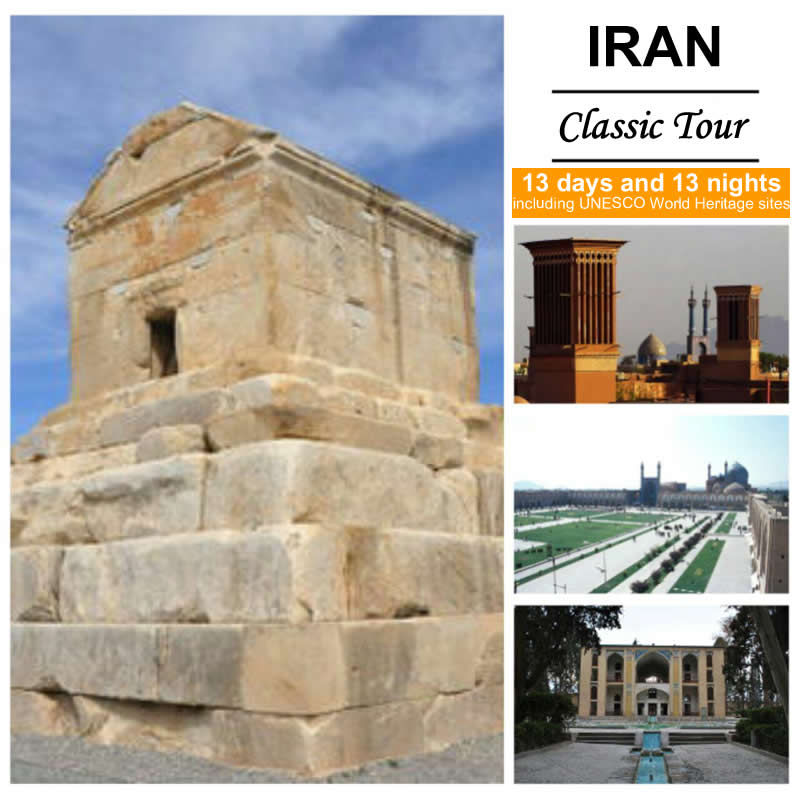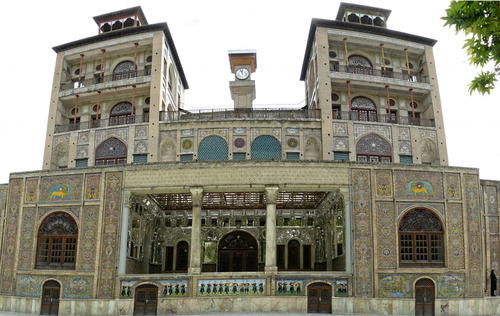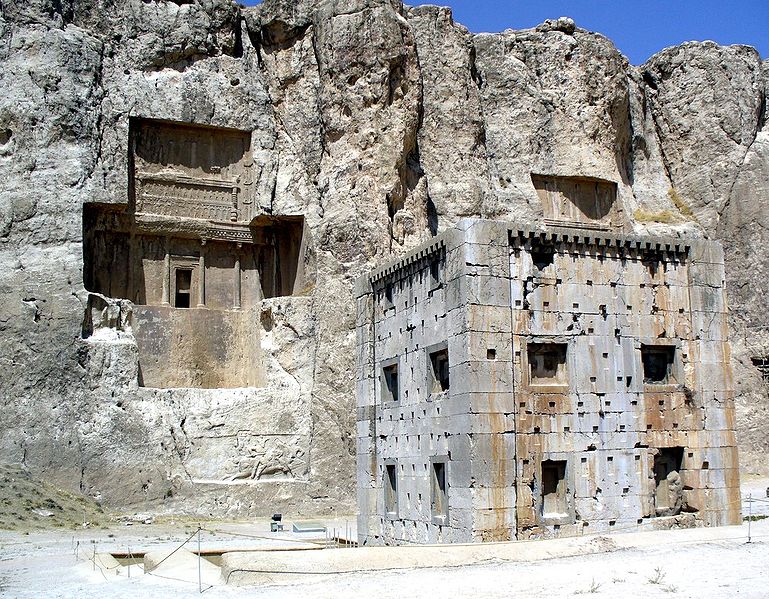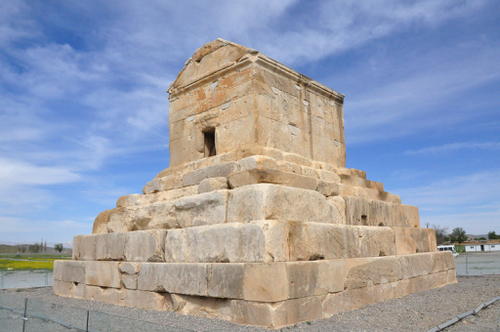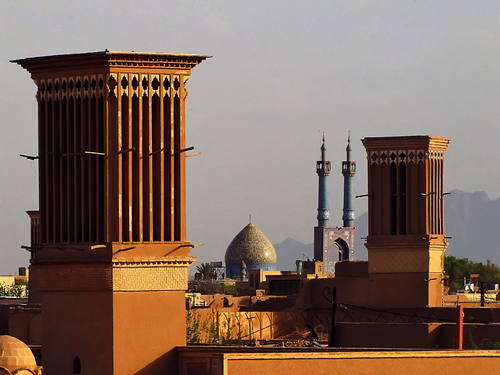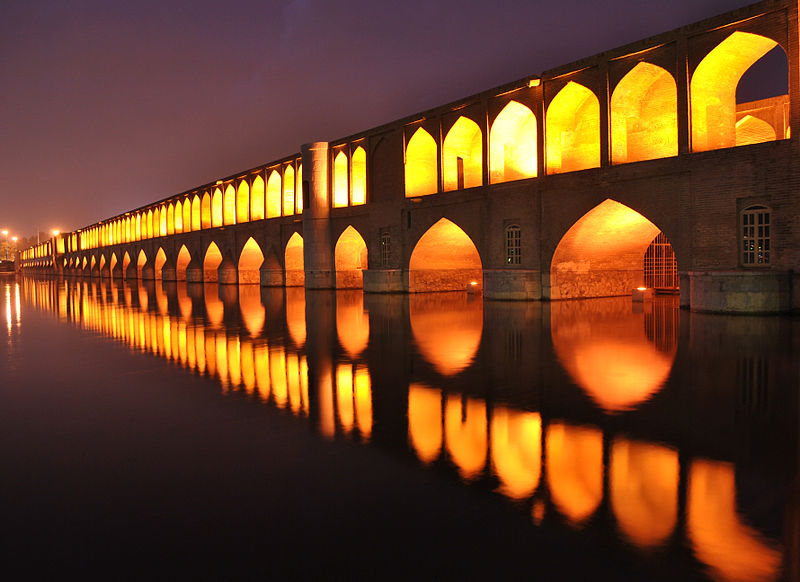The Classic Tour
13 days and 13 nights,
including UNESCO World Heritage sites
This tour begins and ends in Tehran. You’ll spend time in particularly popular sites within the beautiful country of Iran, while not feeling rushed or overwhelmed. This tour includes one domestic flight. You can visit some of the country’s UNESCO World Heritage sites on this tour, and you can customize this tour to your tastes.
If you don’t have the time for the Comprehensive tour, the Classic Tour of Iran is the next best thing! This Iran custom tour is for travelers who like to travel at a more leisurely pace. Of course, since all our tours are customizable, you can extend, shorten or alter this itinerary any way you want. Let us arrange the best value, the best experience and the best satisfaction for the time you have.
Itinerary Highlights of the Complete Tour
- Day 1— Arrive in Tehran: acclimate, relax and some sightseeing (overnight in Tehran)
- Day 2— Tehran for the Golestan Palace and museums (overnight in Tehran)
- Day 3— Fly from Tehran to Shiraz for Karim Khan and Eram Gardens (overnight in Shiraz)
- Day 4— Shiraz City for the Citadel and the Masjid-I Nasir al-Mulk (overnight in Shiraz)
- Day 5— Excursion to Persepolis and Naghsh-e-Rostam (overnight in Shiraz)
- Day 6— Shiraz to Yazd, with a stop at Pasargadae (overnight in Yazd)
- Day 7— Tour Yazd for Jameh Mosque and Towers of Silence (overnight in Yazd)
- Day 8— Yazd to Na’in and on to Isfahan (overnight in Isfahan)
- Day 9— Isfahan for Meidan Emam, Masjed-e Jameh and Vank Cathedral (overnight in Isfahan)
- Day 10— City of Isfahan (overnight in Isfahan)
- Day 11— Isfahan to Abyaneh (an ancient town) and on to Kashan, (overnight in Kashan)
- Day 12— Kashan for Fin Garden and on to Tehran (overnight in Tehran)
- Day 13— Tehran for sightseeing and your departure
Detailed Itinerary of the Complete Tour
This two-week tour of Iran covers 13 days and 12 nights.
Day 1: Landing in Tehran
Arrive in Tehran (IKA Airport ). After passing through customs and claiming your baggage, you’ll see your guide, holding a sign with your name on it, waiting for you outside the baggage area.
He or she will be your guide for the whole trip. Your driver will be waiting for you outside. Your hotel is around 40 minutes away. Get a good night’s sleep at the 5-star Espinas Hotel in Tehran.
Day 2: Touring Tehran
After you enjoy a great buffet breakfast and leave the hotel, you and the guide can decide how you want to spend your time in Tehran.
There are many museums and places of interest, but obviously, you will have to pick and choose which are of the most interest to you. You won’t come close to seeing them all. Tehran is a huge city, with a population of around 12 million people.
The Alborz Mountains, snow-capped most of the year, rise just outside the city in the north. Traffic in Tehran is heavy and chaotic. The foothills of the Alborz have a number of beautiful restaurants, and you might want to tour that area and have dinner there. There is also a cable car that runs most of the year and offers some very scenic views.
Among the sites that can be visited in Tehran are the Golestan Palace, a UNESCO World Heritage site, a complex of 17 palaces built during the Qajar Dynasty in the 18th and 19th Centuries.
The Archaeological Museum: A must-see in Tehran. Collection includes: pottery, ceramics, stone figures and carvings from 5th & 4th millennium BC. Four tablets inscribed in cuneiform, Darius I inscription, carved staircase, tiles from Apadana Palace, and salt man are some of the highlights.
The Carpet Museum: Founded in 1976, exhibits a variety of Persian carpets from all over Iran, dating from the 18th century to present.
The National Jewels Museum: The treasury of Iranian national royal jewels accommodates the world’s most precious jewelry collection. The treasury has an interesting history, going back centuries.
The Glassware and Ceramic Museum (Abgineh): The premises have been turned into a museum where glass and clay works are on display and were built about 90 years ago. The building is a combination of the traditional Iranian style and the European architecture of the 19th century.
The collection of glass and clay works that are on display at the museum is among the rarest in Iran and it includes clay pots dating back the 4th millennium BC up to the present time as well as glass works from the 1st millennium BC up to the contemporary era. European glass works from the 18th and 19th centuries are also part of the collection.
You might also decide to visit a large student art center, where art students exhibit their work and you might have the opportunity of meeting some of them.
Overnight at 5-star Espinas Hotel.
Day 3: Shiraz
After a nice buffet breakfast at the hotel, it’s time to head for the domestic airport, Mehrabad, for the 1-hour flight to Shiraz.
Your guide will be traveling with you for the rest of the trip. Outside the airport in Shiraz, you’ll be met by your driver, who will also be with you for the rest of the trip. After checking into your hotel, you will still have time to visit some of the most interesting places inside Shiraz.
Among the places to see are Karim Khan complex, resembling a medieval fortress; the mausoleum of the 8th-Century poet Hafez, the main Bazaar, established in the 11th Century and the Eram Gardens.
The Eram Gardens are a series of Persian gardens, which as a whole, have been designated a UNESCO World Heritage site.
Overnight Shiraz at either the 5-star Chamran hotel or the 5-star Shiraz Hotel.
Day 4: Shiraz
Shiraz will be your base for visiting three famous historical sites nearby: Persepolis, Pasargadae and Naghsh-e-Rostam. All three of these sites are within easy driving distance of Shiraz and the day-long tour to explore them will be the major activity for tomorrow (Day 5).
But for now we will continue touring the wonders of Shiraz city. Visits can be made to the Pars Museum, the Citadel and the Masjid-I Nasir al-Mulk (Pink Mosque). There is also time to relax, since many sites are closed during the height of the afternoon heat.
Overnight in Shiraz.
Day 5: Shiraz — Excursion to Persepolis
After another good buffet breakfast, prepare for your excursion to Persepolis. Persepolis is probably the most famous single historical site in lran and a Unesco World Heritage Site as well.
When it was founded by Darius III in 518 BC, Persepolis was the capital of the Achaemenid Empire, where the king of kings created an impressive palace complex inspired by Mesopotamian models. The importance and quality of the monumental ruins make it a unique archaeological site.
Persepolis was the example par excellence of the dynastic city, the symbol of the Achaemenid Dynasty, which is why it was burned by the Greeks of Alexander the Great in 330. According to Plutarch, they carried away its treasures on 20,000 mules and 5,000 camels.
What remains today, dominating the city, is the immense stone terrace (530 m by 330 m), half-natural, half-artificial, backed against the mountains.
As in Mesopotamia, the principal building material was sun-dried brick; much of which, has happily survived the vicissitudes of time.
This is one of our favorite sites in Iran. You will see four tombs belonging to Achaemenid kings carved out of the rock face at a considerable height above the ground. They are somewhat reminiscent of Petra in Jordan, but much, much easier to get to.
The tombs are known locally as the ‘Persian crosses,’ after the shape of the facades of the tombs. In addition, there are seven over-life-sized rock reliefs at the site, depicting monarchs of the Sassanid period. It is believed that they were created to celebrate a great victory of ancient times.
Day 6: Shiraz — Yazd
After breakfast, it’s time to set out for the city of Yazd, where you will be spending the next 2 nights. On the way, not too far outside Shiraz, you make a stop to visit Pasargadae.
Pasargadae
Pasargadae is still another UNESCO World Heritage site, Pasargadae was the first dynastic capital of the Achaemenid Empire, founded by Cyrus ll the Great in the 6th century BC.
Its palaces, gardens and the mausoleum of Cyrus are outstanding examples of the first phase of royal Achaemenid art and architecture and exceptional testimonies of Persian civilization.
Particularly noteworthy vestiges include: the Mausoleum of Cyrus ll; Tall-e Takht, a fortified terrace; and a royal ensemble of gatehouse, audience hall, residential palace and gardens.
Pasargadae was the capital of the first great multicultural empire in Western Asia. Spanning the Eastern Mediterranean and Egypt to the Hindus River, it is considered to be the first empire that respected the cultural diversity of its different peoples. This was reflected in Achaemenid architecture, a synthetic representation of different cultures.
After a leisurely visit to Pasargadae, you continue on through the desert to the city of Yazd.
Overnight Yazd
Day 7: Yazd
In the morning, after breakfast, begin your tour of the fascinating city of Yazd.
Among the first things you notice are the many wind-catchers (badgirs) perched on the rooftops of many buildings. The wind catchers were an ancient form of air conditioning and Yazd is famous for having so many examples of them. Your guide will explain how they work.
You may take a stroll through the old city of Yazd, made up of a labyrinth of narrow, winding alleys, where without a guide, it might be easy to get lost.
Yazd was known as a center of Zoroastrianism (there are still around 150,000 Zoroastrians living in lran today). The Towers of Silence, on the edge of the city, were used to expose bodies to the elements until the 1960s, when the practice was banned by the Shah.
You can climb up the large hills where the towers can be seen and you can also enter the ancient houses where members of the funeral parties stayed. Even in the surrounding heat, these houses are amazingly cool.
Yazd is also a place where you can learn about the fascinating ‘qanat’ water system, an ancient method of supplying water to cities and farms by means of underground channels. There is even a qanat museum.
One of the most exciting things you can do in Yazd is to see the body building men who show up twice an evening at the Zurkhane or House of strength.
This is an ancient martial arts ritual, accompanied by music and lasting an hour, that is open to the public. It is in the same building that houses an ancient reservoir. The men easily twirl 20-kilo pins as part of their exercises.
Overnight in Yazd at either the Moshir Hotel of the Hotel Dad.
Each of these hotels is a converted caravanserai, which are now fully modern hotels.
Day 8: Yazd — Na’in — Isfahan
After breakfast, set out for Na’in (155 km) en route to Isfahan. Na’in is an ancient town in the desert and a good place to break up the trip. In Na’in stop to see the Jame Mosque, one of the oldest in Iran, dating back to the 9th Century.
Then continue on to lsfahan, another 145 km along the desert road. Approaching Isfahan the road starts to climb and the scenery becomes more interesting.
For many tourists, Isfahan is the high point of the trip. It can be called the tourist center of Iran and you are likely to run into many foreign groups there. After arriving in Isfahan and checking into your hotel, it will be time to start seeing some of the many sights of the city.
Isfahan is justly famous for its 11 bridges spanning the Zayandeh River (although the presence of water in the river is seasonal). These bridges are beautiful architectural feats, each one being distinctive and impressive in its own right. We will be able to visit several of these unique bridges and can walk across some of them.
Day 9: Isfahan
Isfahan boasts two UNESCO World Heritage sites. You may have already seen photos of the Meidan Emam. The Meidan was built by Shah Abbas I the Great at the beginning of the 17th century, and it’s bordered on all sides by monumental buildings linked by a series of two-story arcades.
The site is known for the Royal Mosque, the Mosque of Sheykh Lotfollah, the magnificent Portico of Qaysariyyeh and the 1Sth-century Timurid palace. They are an impressive testimony to the level of social and cultural life in Persia during the Safavid era.
There will be plenty of time to walk around the square, visit some of the adjoining buildings and the great mosque and explore the nearby bazaar. The bazaar itself is huge and you may well find some things to purchase, even carpets (see Q. & A. on buying carpets in Iran).
The second UNESCO site is the Jameh Mosque. Located in the historic center of Isfahan, the Masjed-e Jim (‘Friday mosque’) can be seen as a stunning illustration of the evolution of mosque architecture over twelve centuries, starting in ad 841.
It is the oldest preserved edifice of its type in Iran and a prototype for later mosque designs throughout Central Asia. The complex, covering more than 20,000 m, is also the first Islamic building that adapted the four courtyard layout of Sassanid palaces to Islamic religious architecture. Its double-shelled ribbed domes represent an architectural innovation that inspired builders throughout the region.
The site also features remarkable decorative details representative of stylistic developments over more than a thousand years of Islamic art.
It may even be possible for you to meet with some Muslim clerics who speak English and are interested in discussions with Americans. You may not always agree with what they have to say, but it is guaranteed to be an interesting discussion.
Another place well worth visiting in Isfahan is the Vank Cathedral, established by Armenian immigrants after the Ottoman War of 1603–1605. The church has beautifully detailed wall paintings which retell Biblical stories.
There is also an Armenian museum at the site. The neighborhood around the Vank Cathedral has become somewhat “trendy” and is an interesting area to walk around and have dinner.
Overnight in Isfahan at a 5-star hotel.
Day 10: Isfahan
These are only some of the highlights of Isfahan. There is a lot more to see and how much you see depends on how early a start you get in the morning. Your guide and driver will leave as early as you like and, taking into account your guide’s recommendations, together you can decide on your day’s itinerary.
Overnight in Isfahan at a 5-star hotel.
Day 11: Isfahan — Abyaneh — Kashan
After breakfast, set out for the ancient town of Abyaneh, 160 km away. One of the interesting things here is seeing how the women dress. Abyunaki women typically wears a white long scarf (covering the shoulders and upper trunk) which has a colorful pattern and an under-knee skirt.
The Abyunaki people have persistently maintained this traditional costume despite pressures from time to time by the government trying to change it.
Abyaneh is one of the oldest in Iran, attracting numerous native and foreign tourists year-round, especially during traditional feasts and ceremonies. It is a very popular tourist destination for Iranians, and staying at the hotel here will give you a good opportunity to meet some Iranian tourists.
After leaving Abyaneh, it’s another 80 km to Kashan.
Overnight at Ameri hotel Hotel.
Day 12: Kashan — Tehran
Kashan, a city famous for its carpets. There are a number of interesting things to see here, including the bazaar, which is a particularly interesting one. There are also several restored 18th century houses that you can visit.
You can have a walk in the Fin Garden, which is a historical Persian garden. containing Kashan’s Fin Bath, where Amir Kabir, the Qaiar chancellor, was murdered by an assassin sent by King Nasereddin Shah in 1852. Completed in 1590, the Fin Garden is the oldest extant garden in Iran.
After a good exploration of Kashan, it’s time to head to Tehran, 200 km away.
Overnight at 5-star Espinas Hotel in Tehran.
Day 13: Tehran — Departure
Today is the last day of your trip and it can be a leisurely one, or you can still see some of the many museums or historical sites in Teheran that you did not have time for at the beginning of the trip.
Tehran is a huge city and there is a lot to see and do there, so you can again confer with your guide and decide how you want to use your time there.
Almost all international flights leave late at night or early in the morning. Depending on your flight time, you can stop for dinner before leaving for the airport. Your guide will make sure that you get there in plenty of time to make your flight home.
Major Points of Interest on an Iran Map
The map below highlights the most famous historic sites and points of interest in Iran covered by the Classic Tour package.
[nwm_map id=”4″]
